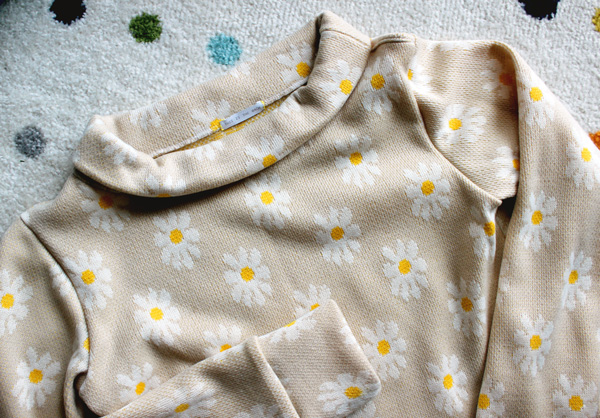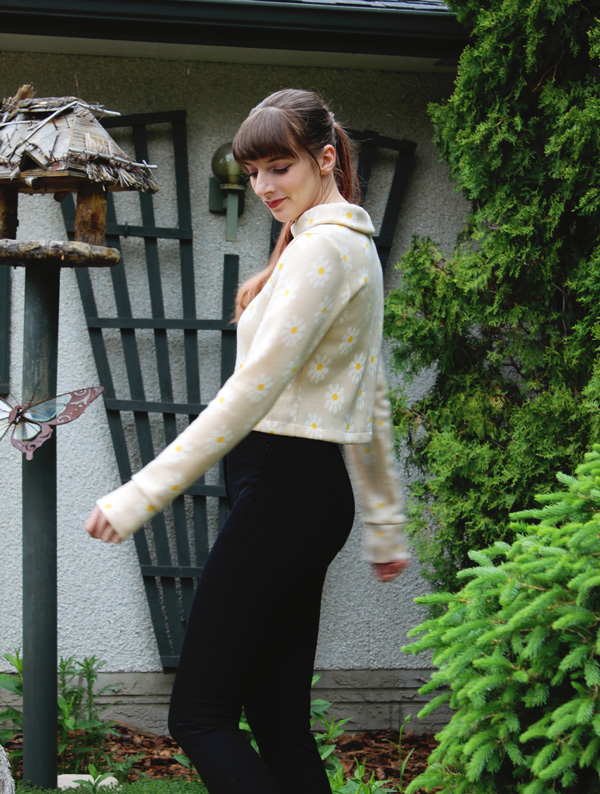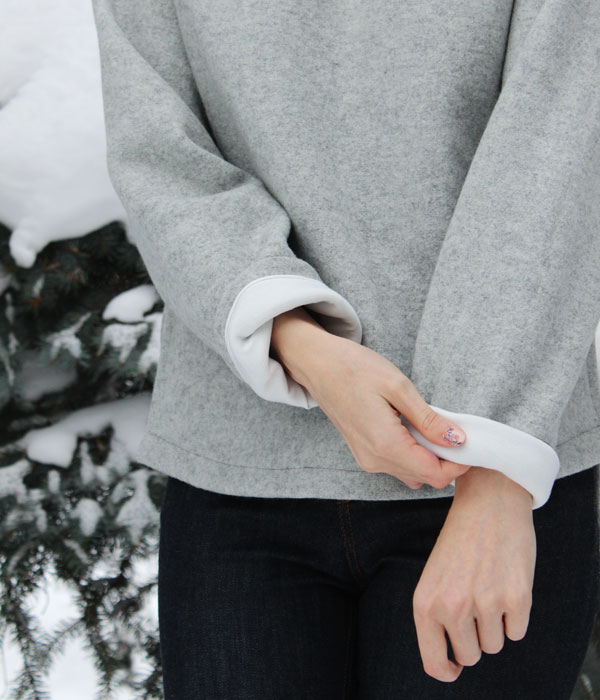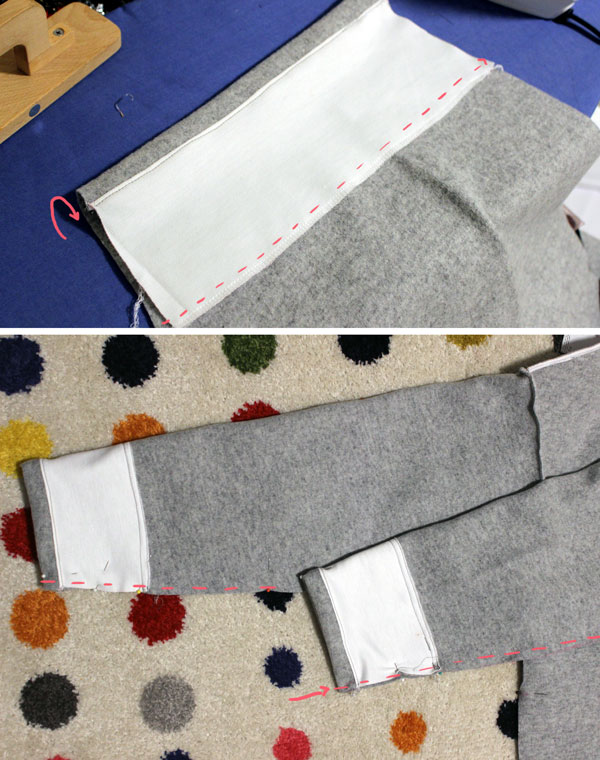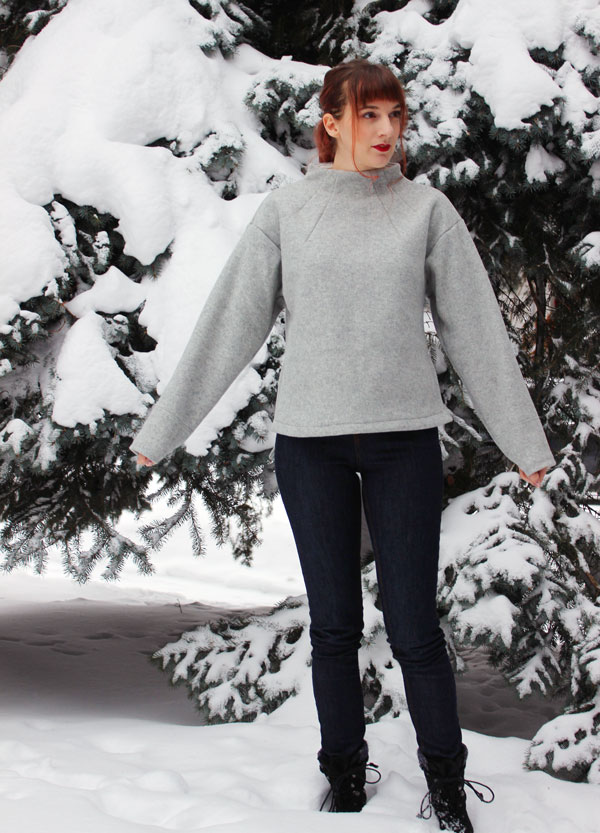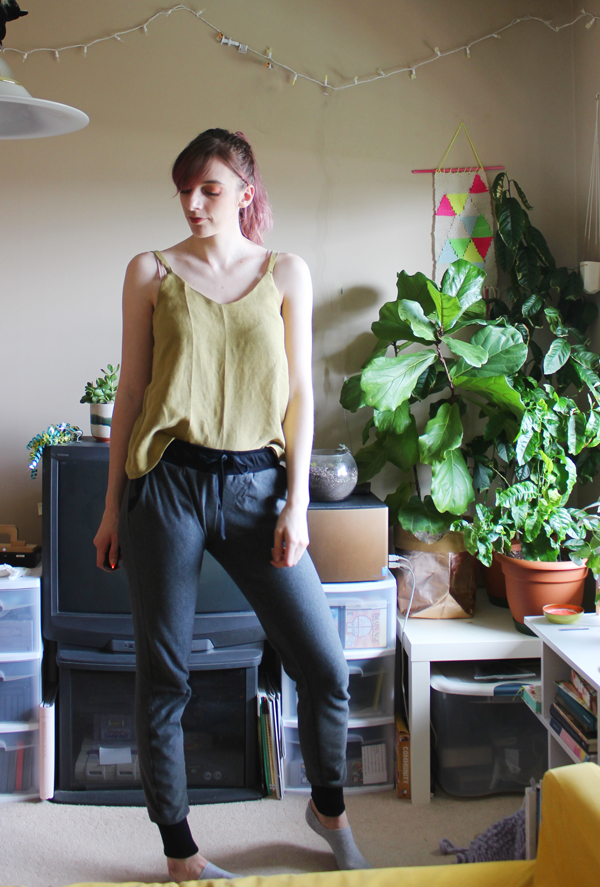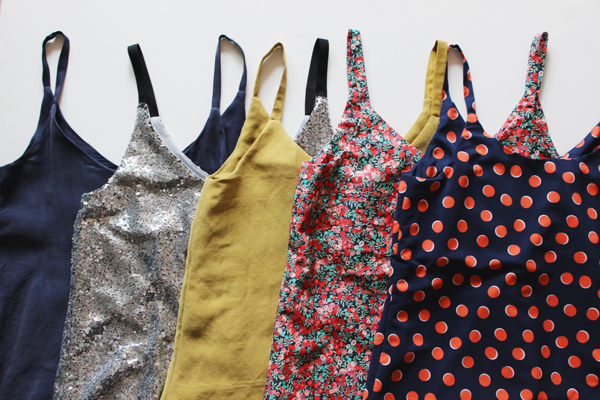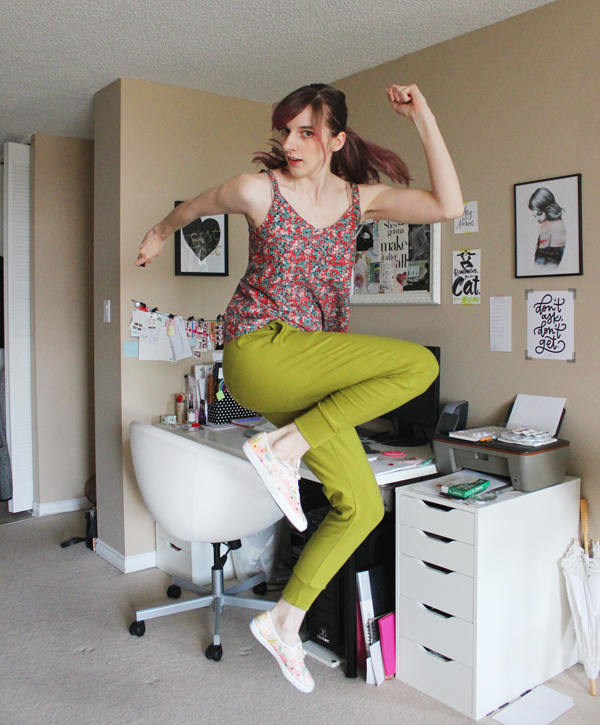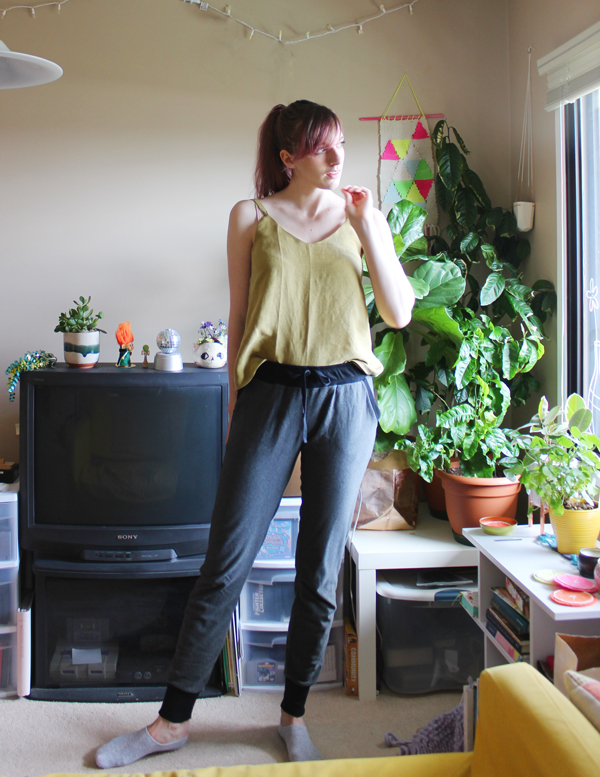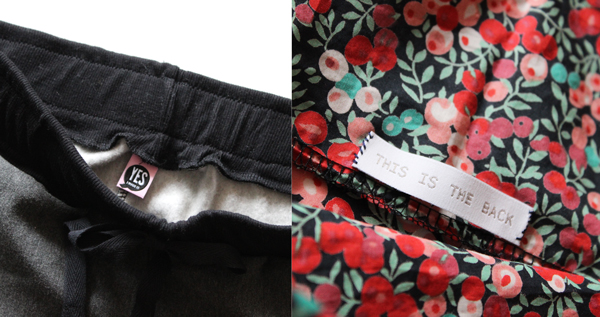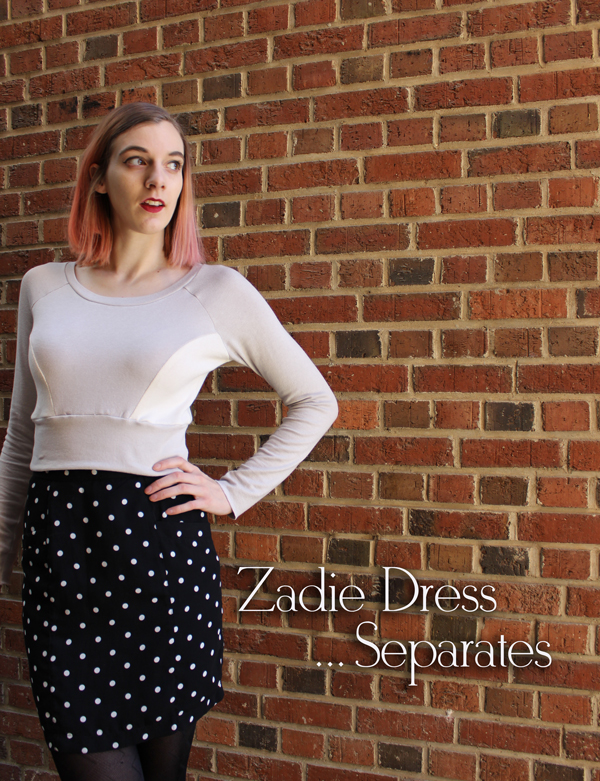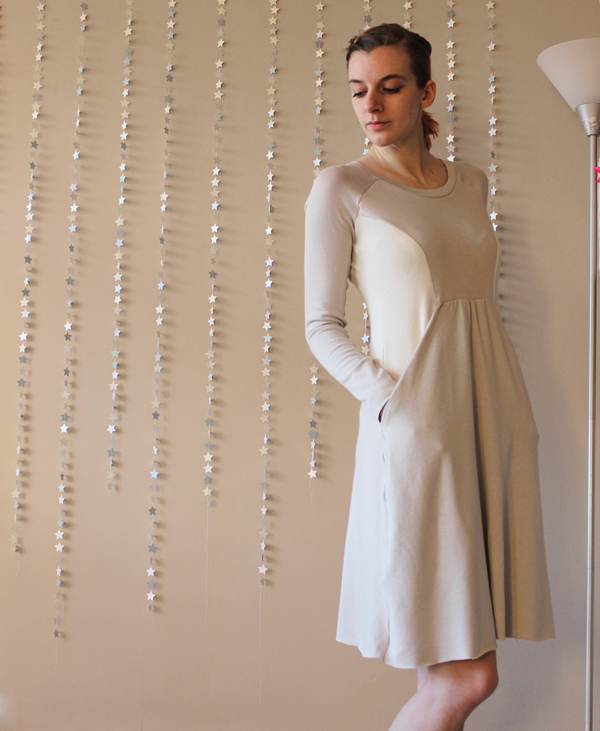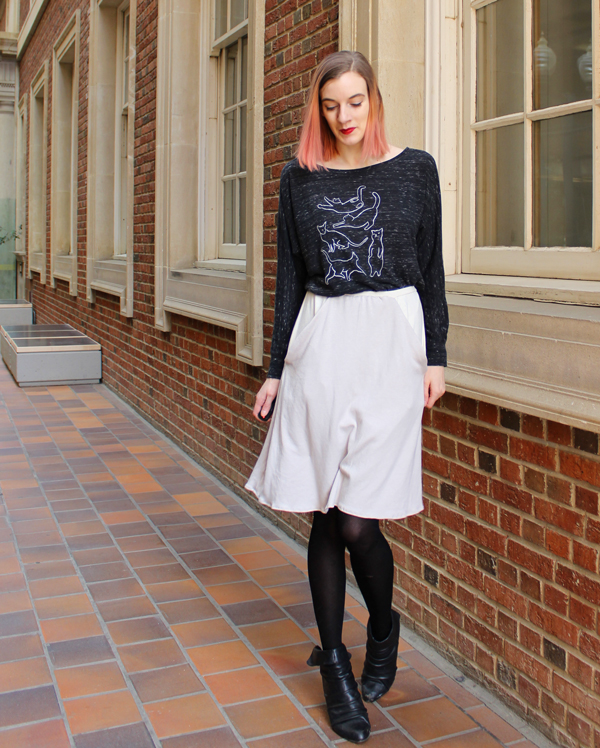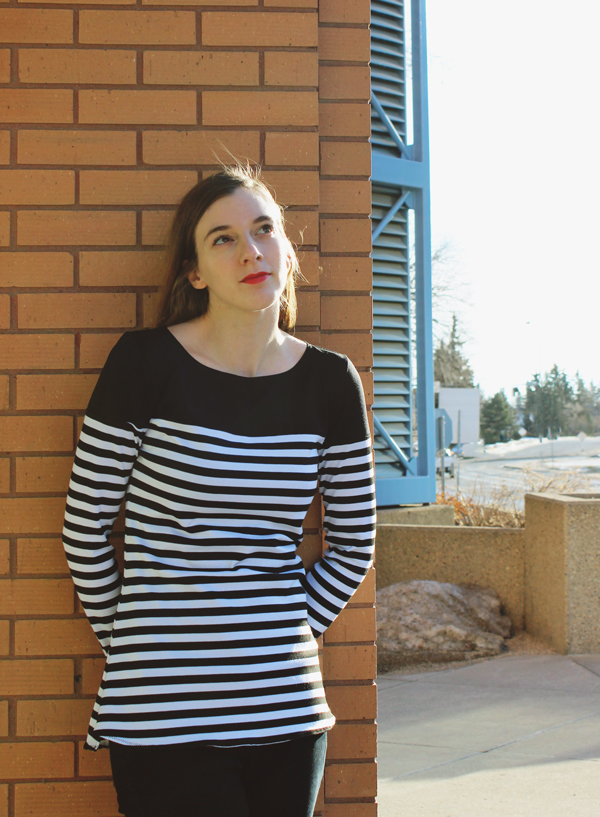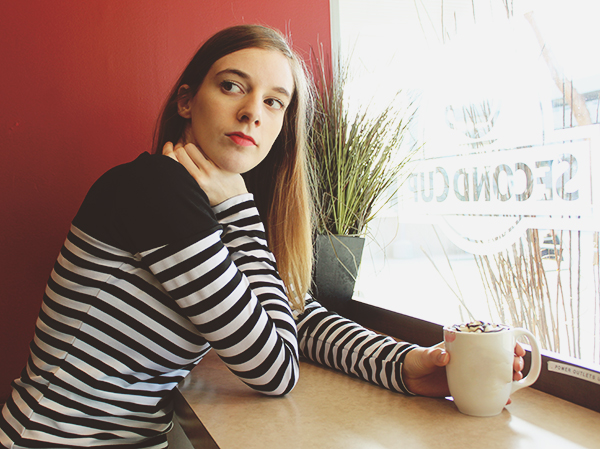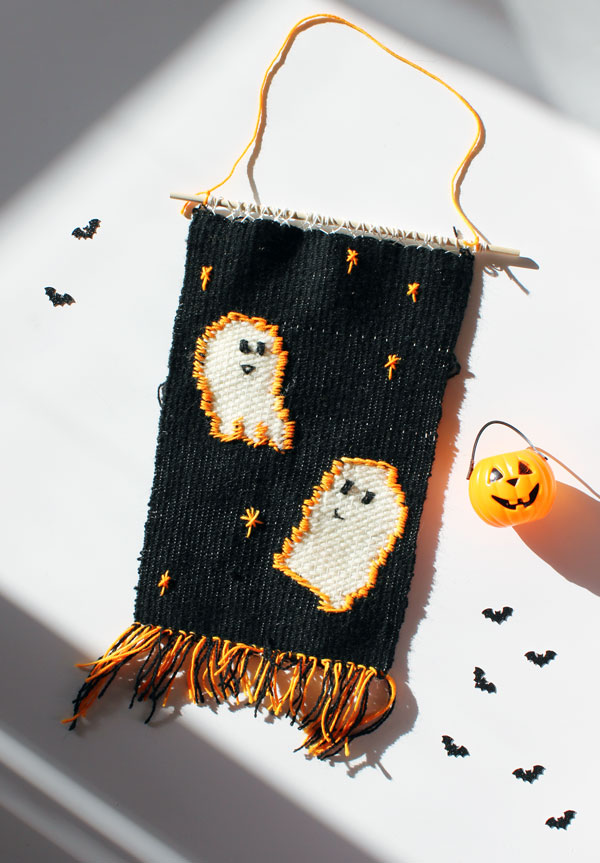
Hello and welcome back! This is the second of our adventures with this daisy jacquard knit fabric. In case you missed it, I bought 1.5 meters of this fabric and couldn’t decide between two patterns to make from it, so I got creative and managed to squeeze two cropped sweaters out of it. The first was a retro Coco Sweater and the second is this relaxed True Bias Marlo cardigan.
I knew this pattern would be a great fit for this whimsical print. I loved the look of the relaxed, slouchy fit, and together feels like a cool grandma’s sweater.
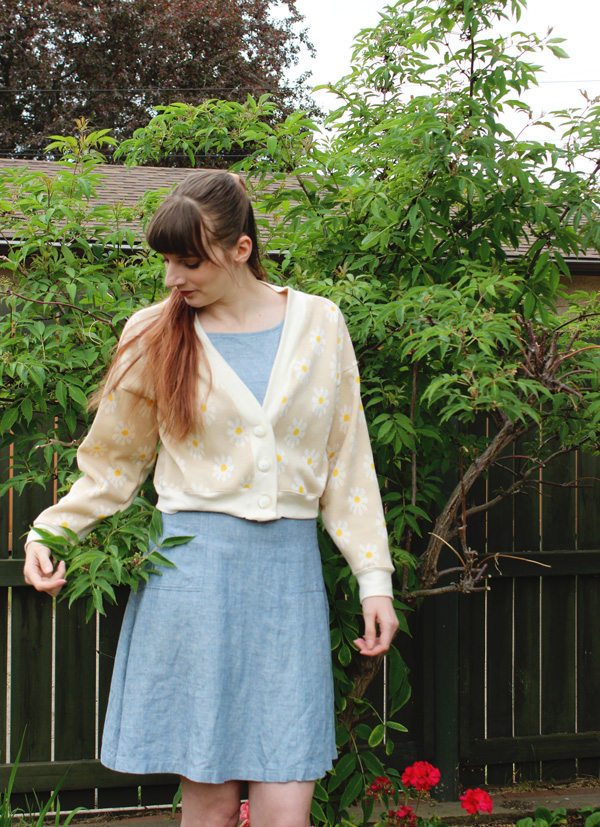
In my deliberations, I really considered making the full sized version for the ultimate laid back comfort, but I to get the most of my fabric it would have to be the cropped version. Thankfully I found the perfect coordinating solid knit fabric for the cuffs and neckband in the back of my stash (leftovers from my Zadie Dress) . This ended up being the perfect find, as it is slightly thinner and folded over nicely. I think if I used the self fabric it would have felt too bulky.
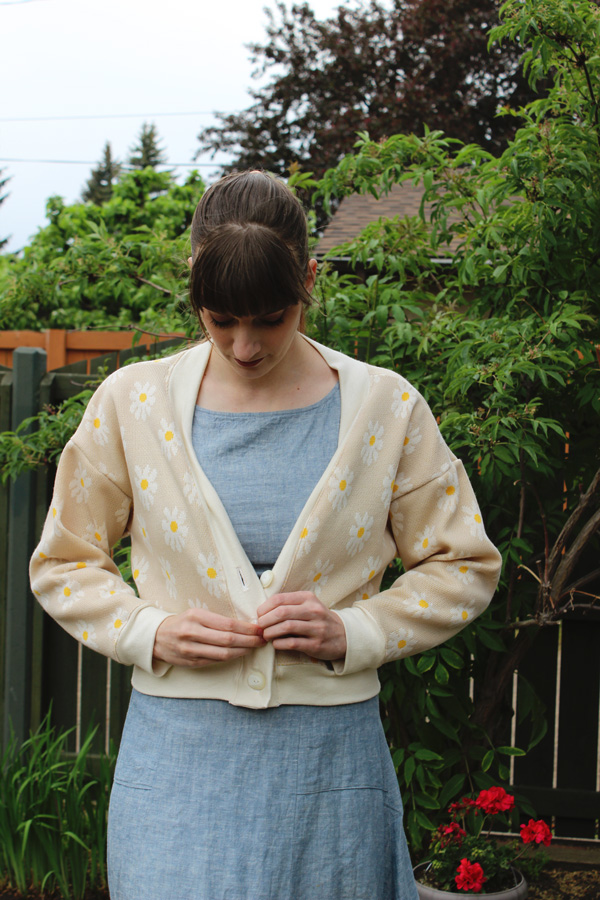
I cut a size 4 and made only a few adjustments. Normally, even with a cropped sweater, I would add a little bit of length to the torso but because I was playing fabric chicken, I didn’t have the real estate to do so, but I did have enough room to add an extra 2cm to the sleeve length (#longsleeves4eva).
I also adjusted the placement of the button closures. I felt that the original placement made the neckline closing too high, and I liked the idea of having it feel a little more open even when buttoned up. I played around with the placement by just pinning it as I wore it. The softness of the binding allowed me to be more flexible here as the neckline curved however I needed it to.
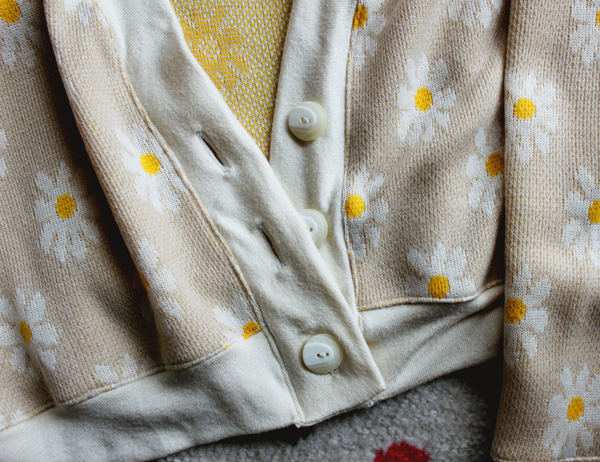
Speaking of buttons, I found three perfect buttons from my collection that complimented things well. I am always wary of buttonholes, since it feels like everything can go wrong here. So I diligently practiced on some scrap fabric. No issues. And then it was time for the real thing aaannd my bobbin got tangled. Luckily that was the only snafu and it didn’t damage my fabric too badly when unpicking it. No matter how many times you practice those buttonholes are always out to get you…

The final garment is adorable, on trend and so cozy. I do find this a bit challenging to style as I don’t have anything else quite like it in my wardrobe, but it’s been a fun challenge to experiment mixing it in. Especially since it’s just so darn comfortable. I think adding that extra length would have helped if possible. While I truly believe that you should wear whatever you want at whatever age you are, I personally don’t like showing off midriff so there are some limits to what I can pair this with at this length.
I hope your spring has been sunny and I will be back soon with an in-depth post about how I managed to squeeze both patterns from my limited fabric yardage.


